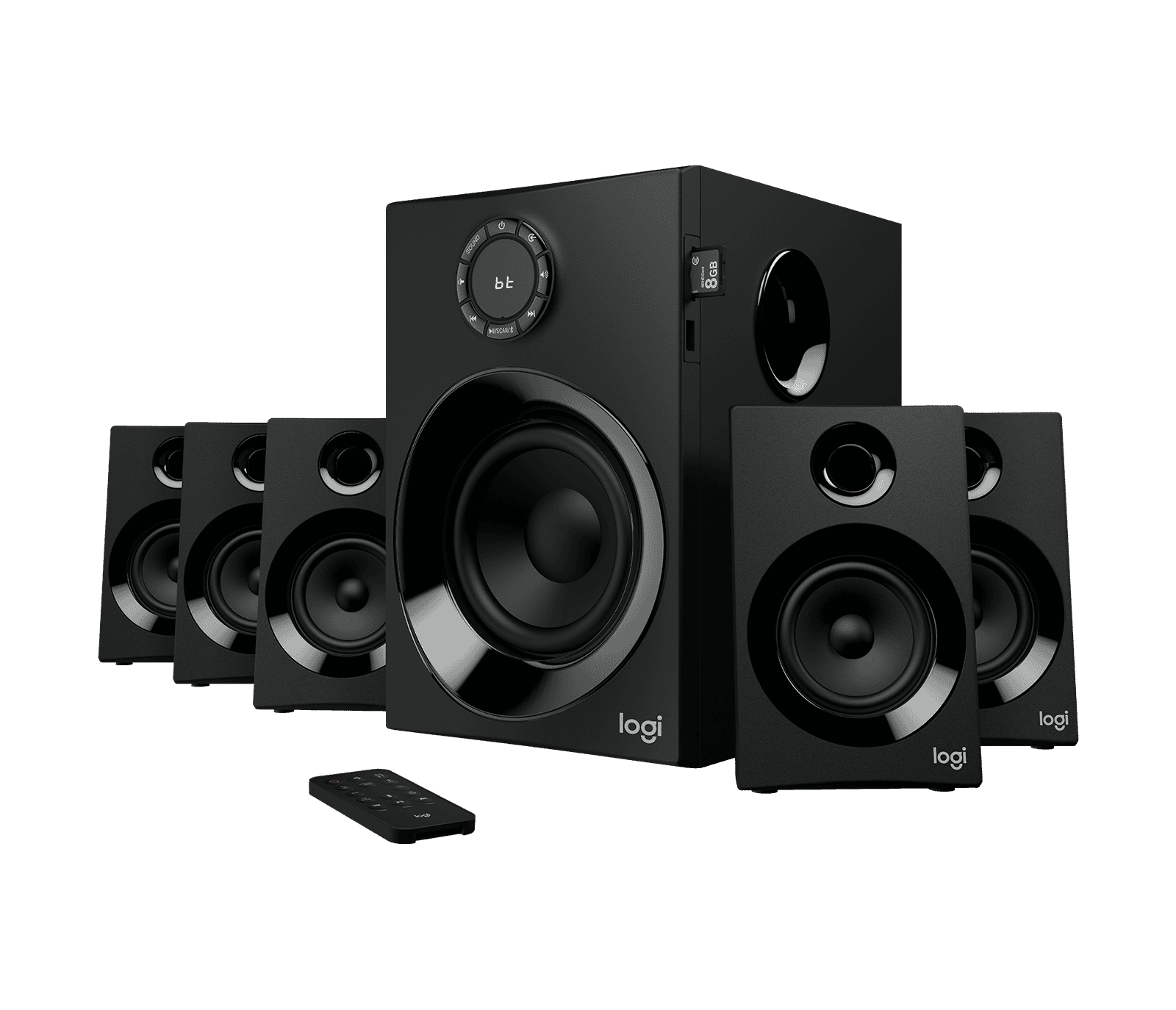Surround sound systems have become a standard in home entertainment, providing an immersive audio experience that enhances the overall viewing pleasure. A 5.1 surround sound system is one of the most popular configurations. This system includes six channels: left, right, center, left surround, right surround, and a subwoofer for bass frequencies. The subwoofer is denoted by the “.1” in 5.1, highlighting its role in low-frequency effects.
These systems work by creating a sound field that envelopes the listener, positioning audio in a 360-degree space around them. This setup mimics the experience of being in a movie theater, where sounds can come from all directions. A 5.1 system takes advantage of this by allocating different audio elements to each channel, thus creating a lifelike sound environment.

Key Takeaways
- A 5.1 surround sound system includes six channels to create an encompassing audio environment.
- The system is designed to replicate a theater-like experience in the home, with speakers positioned around the listener.
- Understanding how to set up and connect a 5.1 system is crucial for optimal performance.
Understanding 5.1 Surround Sound Systems
In a 5.1 surround sound system, audio is distributed among multiple speakers to create an immersive listening environment. This setup is standard in home theaters for enjoying movies with rich, dynamic sound.
Fundamentals of 5.1 Surround Sound Configuration
5.1 surround sound systems include six channels: five main speakers and one subwoofer. The speakers are positioned as follows: one center speaker for clear dialogue, left and right main speakers for directional cues, and two surround speakers at the sides or in the back to produce ambient effects.
Technical Aspects of 5.1 Audio Technology
Technologies such as Dolby Digital and DTS encode 5.1 audio, with each channel dedicated to specific sound frequencies. These audio formats ensure soundtracks are played back accurately, as intended by the audio engineers.
Speaker Components and Placement Strategies
Ideal speaker placement is key to optimal 5.1 sound. The center speaker should be near the TV, the left and right speakers at ear level, forming an arc, and the surround speakers to the sides, slightly behind the listening area. The subwoofer can go almost anywhere due to low frequencies being non-directional.
Enhancing Your Home Theater Experience
5.1 systems elevate the home theater experience by delivering detailed, location-specific sound. Ensuring speakers are calibrated to work together seamlessly maximizes audio immersion when watching movies or listening to music.
Selecting the Right 5.1 System for Your Needs
When choosing a 5.1 system, considering room size and budget is crucial. Brands like Sony offer a range of options. Look for a receiver that supports Dolby Digital and DTS, ensuring compatibility with various surround sound formats.
Additional Configuration Options Beyond 5.1
While 5.1 is a solid foundation, systems like 7.1 or Dolby Atmos offer even more speakers for increased immersion, especially with height channels for overhead sounds. These setups build upon the 5.1 configuration to provide a more enveloping audio experience.
Connectivity and Compatibility
Connecting a 5.1 surround sound system to your media setup requires attention to inputs, outputs, and format compatibility. Making it work seamlessly with your existing entertainment sources, streaming content, and gaming can enrich your audio experience.
Integrating with Existing Entertainment Sources
To integrate a surround sound system with current devices, ensure that your TV, Blu-ray player, or other media devices have the appropriate outputs. Most systems connect through optical, HDMI, or audio cables. For instance:
- TVs and Blu-ray players: They often use HDMI outputs that carry both audio and video signals to the receiver.
- Vinyl or Laserdisc players: These may require an analog connection to the receiver.
Wireless Features and Modern Conveniences
Many modern surround sound systems, including brands like Sonos and Yamaha, feature wireless subwoofer options and satellite speakers. This significantly reduces cable clutter. For example:
- Wireless subwoofer: Can be placed anywhere in the room without worrying about running a cable back to the main unit.
Surround Sound in the World of Streaming Content
Streaming services such as Netflix, Amazon Prime Video, and Disney+ often support 5.1 surround sound. To experience this:
- Check service compatibility with Dolby Digital or DTS.
- Configure the streaming device’s audio settings, like those on Apple TV+, to output surround sound.
Evolution of 5.1 Sound in Gaming and Virtual Reality
Video games and VR platforms increasingly support 5.1 surround sound for a more immersive experience. Systems must support the audio format provided by the game or console. With compatible hardware:
- Users feel the game environment with audio cues from different directions.
- VR setups using 5.1 amplify the realism of the virtual world.
Frequently Asked Questions
This section addresses common queries about 5.1 surround sound systems, specifying their unique features, installation, and use.
What does the ‘.1’ signify in a 5.1 surround sound system?
The ‘.1’ in a 5.1 surround sound system refers to the subwoofer. It produces the bass frequencies that give depth to sounds like explosions in a movie.
How does a 5.1 surround sound system differ from Dolby Atmos?
A 5.1 surround sound system has six audio channels. Dolby Atmos includes these and adds height channels for sounds above the listener, creating a three-dimensional audio space.
What is the optimal placement for speakers in a 5.1 surround setup?
In a 5.1 system, place three speakers at the front—center, left, and right. The two remaining speakers should sit to the sides slightly behind the listening area. Position the subwoofer towards the front of the room.
Can you explain the setup process for a 5.1 surround sound system?
To set up a 5.1 system, connect the speakers and subwoofer to the receiver. Calibrate the system using the receiver’s setup function to balance the sound across the room.
What content is available in 5.1 audio on streaming platforms such as Netflix?
Streaming platforms like Netflix offer a variety of content with 5.1 audio. Look for the 5.1 logo next to the movie or show title to ensure availability.
How does 5.1 surround sound enhance the home theater experience?
A 5.1 surround sound system envelops you in audio, making you feel like you’re part of the scene. It delivers clear dialogue from the center, ambient sounds from the side speakers, and powerful bass from the subwoofer.





